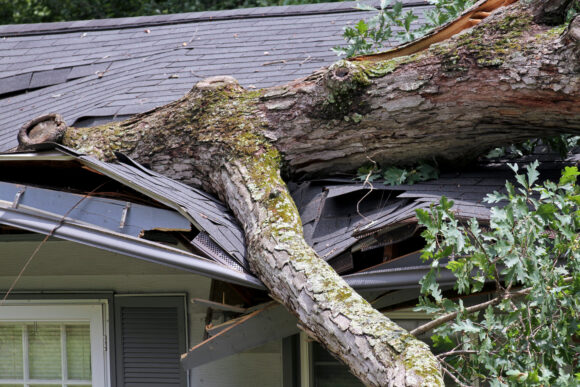For whatever reason, recently I’ve had a slew of questions involving wear and tear exclusions.
Perhaps that’s a product of the hard market where claims are sometimes examined more intently, especially with regard to policy exclusions. To paraphrase – torture words and they’ll confess to anything.
But all too often I’ve seen fortuitous losses treated as un-fortuitous losses in order to trigger certain “maintenance” types of exclusions. For example, consider the following sets of exclusions, the first appearing in a commercial property policy and the second in a homeowners policy:
Commercial Property Policy:
- Wear and tear;
- Rust, corrosion, fungus, decay, deterioration, hidden or latent defect or any quality in property that causes it to damage or destroy itself;
- Smog;
- Settling, cracking, shrinking or expansion;
- Nesting or infestation, or discharge or release of waste products or secretions, by insects, birds, rodents or other animals;
- Mechanical breakdown…;
- The following causes of loss to personal property:
- Dampness or dryness of atmosphere;
- Changes in or extremes of temperature; or
- Marring or scratching.
Homeowners Policy:
- Wear and tear, marring, deterioration;
- Mechanical breakdown, latent defect, inherent vice or any quality in property that causes it to damage or destroy itself;
- Smog, rust or other corrosion, or dry rot;
Can you see what, arguably, all of these exclusions have in common?
As the International Risk Management Institute (IRMI.com) said about a list of exclusions that included wear and tear, rust, corrosion, deterioration, latent defect, settling, cracking, shrinking or expansion, mechanical breakdown, marring, scratching, etc.: “The excluded perils in this group are characterized either by their predictable or expected occurrence. They are either the normal, unavoidable consequence of use of the property in question or detectable and preventable with proper maintenance.”
IRMI supports its interpretation by citing case law such as Contractors Realty Co. v. Ins. Co. of N. Am., 469 F.Supp. 1287, 1293 (S.D.N.Y. 1979) where the court opined that, “Losses due to normal wear and tear are not fortuitous … as such damage is inevitable.”
Similarly, in City of Burlington v. Indemnity Ins. Co. of North America, 332 F.3d 38 (2d Cir. 2003) the court explained: “Normal wear and tear … is not an insurable risk, but is a certainty.”
Black’s Law Dictionary defines wear and tear to mean, “[D]eterioration or depreciation in value by ordinary and reasonable use of the subject matter.” In other words, these exclusions apply to long-term damage that occurs through the natural use of property, the damage being gradually incurred through routine, frequent use.
Exclusion Misapplications
In one claim, an expensive hardwood floor in a home was irreparably damaged by a party guest in stiletto high heeled shoes while they were dancing or otherwise moving about. The claim was initially denied under the open perils homeowners policy, citing the “marring” and “wear and tear” exclusions. If the floor was damaged over a period of years due to normal wear, that is excluded, but not this type of damage.
In two other litigated claims involving open perils homeowners policies, expensive counter and floor tiles were damaged when a wine bottle and a hammer, respectively, were dropped. Both courts ruled that the exclusion for “wear and tear, marring, and deterioration” did not apply for the reasons previously stated. The damage was caused by the abrupt dropping of objects. There was no gradual “marring” through use over time.
In another claim under a commercial property policy, merchandise in a clothing store was damaged by a leak through a dilapidated roof. The adjuster initially cited a “wear and tear” exclusion but these exclusions typically apply only to the property that, itself, is worn and torn … in this case, the roof. Usually, ensuing loss is not excluded if otherwise covered. In this claim, unfortunately, there was a separate exclusion for interior water damage.
Most recently, an agent sent me a claim denial for damage to the roof of a home where the adjuster wrote, “We reviewed the facts of your claim and have determined hurricane force winds caused minor damage to your tile roof. The winds pushed a tree onto your roof that had to be removed. At this time, these damages to the roof appear as a result [sic] wear, tear, and/or deterioration and will …” not be covered.
Of course, it’s covered as a windstorm claim. It doesn’t matter if the roof is worn or torn as far as coverage is concerned. And how much wear and tear could there have been if hurricane force winds only caused minor damage? Valuation could be another matter. If coverage is on an ACV basis, then wear and tear is a material issue as to how much coverage is provided, but not whether coverage is provided.
The premise that these types of exclusions only apply to the property that is actually worn and torn could more effectively be communicated to policyholders if language similar to that in the ISO Personal Auto Policy (PAP) was used.
To illustrate, an adjuster denied damage to the undercarriage of an auto that resulted when a tire blew out. The PAP excluded [emphasis added]: Blowouts, punctures or other road damage to tires.
Note that the exclusion applies to damage “to” the tires, not any resulting physical damage to the vehicle.
In another claim, an auto was damaged when it ran off the road and hit a light pole as the result of a blown tire. This policy excluded [emphasis added]:
Damage due and confined to:
- Wear and tear;
- Freezing;
- Mechanical or electrical breakdown or failure; or
- Road damage to tires.
Using the “and confined to” and the “to tires” language makes it inarguable that the exclusion applies only to damage to the property in question. An important caveat is that you must read the actual policy language carefully. With some policy forms, particularly non-ISO forms, you may encounter exclusionary language akin to that found in the list of “anti-concurrent causation” exclusions found in ISO and other forms. As always, RTFP!
Was this article valuable?
Here are more articles you may enjoy.



 Tesla Slumps Below 50% Share of California’s Electric Car Market
Tesla Slumps Below 50% Share of California’s Electric Car Market  Global Q1 Commercial Insurance Rates Drop 3%, but US Casualty Bucks the Trend
Global Q1 Commercial Insurance Rates Drop 3%, but US Casualty Bucks the Trend  Florida Bill Advances, Would End Board of Engineers, Other Professional Agencies
Florida Bill Advances, Would End Board of Engineers, Other Professional Agencies  Marsh Sues Aon, Ex-Team Leader Over Exit of 20 Construction Surety Employees
Marsh Sues Aon, Ex-Team Leader Over Exit of 20 Construction Surety Employees 



